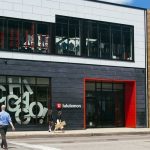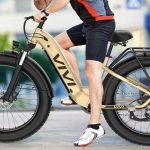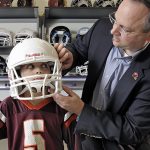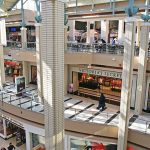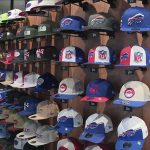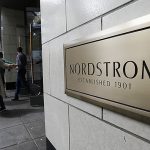The pendulum is swinging back the other way again at Saucony, Inc. as the mall business that fueled growth over the last couple of years now dries up and the company again refocuses its efforts in running specialty where they have been, at best, stagnant over the same time frame.
Company president and CEO John Fisher attempted to frame the conversation around the party line that the company was able to “generate better-than-expected bottom-line results.” Lost in that line of thought was the fact that net income fell nearly 25% for the quarter and the better-than-expected results were due in large part to an improvement in gross margins that benefited from foreign currency exchange rates.
Saucony brand Domestic sales fell 18% in the quarter to about $25 million, compared to roughly $30.5 million in the year-ago period.
Based on those numbers, and the category percentages provided by the company, Saucony took a hit again in both Crossover and Originals product sales, with Domestic Crossover sales falling more than 34% in the period and Originals plunging more than 45% for the period in the U.S. Management also said average selling prices for those products declined for the period, a metric that was offset a bit by “increased special make-up product and closeout footwear volumes.”
The good news is that the brands better technical goods are getting more play, making up 62% of total Domestic sales for the brand in Q1, compared to just 49% of sales in the year-ago period. But that shift in share equates roughly to just a 4% increase in sales in the Technical product.
The one strong area of business looks to be the HIND apparel brand, which had a 21% increase in sales. That increase drove a 10% increase in the Other Domestic business to $6 million for the quarter. The HIND effect was offset a bit by decreased sales in Spot Bilt footwear and a 2% decrease in factory outlet store sales. Owned-retail same-store sales were down about 5.5% in the quarter.
Saucony brand footwear and apparel accounted for approximately 85% of first quarter 2005 net sales, compared to 88% of the first quarter 2004.
The move to more technical product is continuing into the order backlog pipeline, with Technical representing 67% of the Domestic backlog versus 53% of the backlog at the same time last year. Crossover fell to 23% of backlog versus 30% last year and Originals is just 10% of the order book compared to 17% at the comparable point in 2004.
Fisher said they had double-digit increases in the Technical category order backlog in the U.S.
One curious point came during the quarterly conference call when Mr. Fisher laid out plans to find ways to take down the price-point of their Crossover products to build back volume. He felt they had been undercut by other brands. SEW finds this an interesting tactic as most other brands and retailers are pushing price-points higher as they up-sell consumers to better technical goods.
>>> Selling price and selling performance dont usually go hand in hand. Somehow, this just isnt adding up
>>> Brooks and Asics were two brands that were targeted by Saucony for a share battle at Specialty. Both brands have built their share through limited distribution and are creating demand for their brands at specialty through better product and service. Lesson here?
| Saucony, Inc. | |||
| First Quarter Results | |||
| (in $ millions) | 2005 | 2004 | Change |
| Total Sales | $41.9 | $47.0 | -10.9% |
| Domestic | $31.1 | $36.0 | -13.6% |
| International | $10.8 | $11.0 | -1.8% |
| Gross Margin | 42.0% | 40.6% | +150 bps |
| SG&A | 1.2% | 1.1% | +10 bps |
| Net Income | $3.2 | $4.2 | -24.6% |
| Diluted EPS – A | 41¢ | 58¢ | -29.3% |
| Diluted EPS – B | 46¢ | 64¢ | -28.1% |
| Inventory @ Qtr-End | $22.6 | $22.2 | +1.8% |
| Backlog @ Qtr-End | $50.2 | $53.0 | -5.3% |

